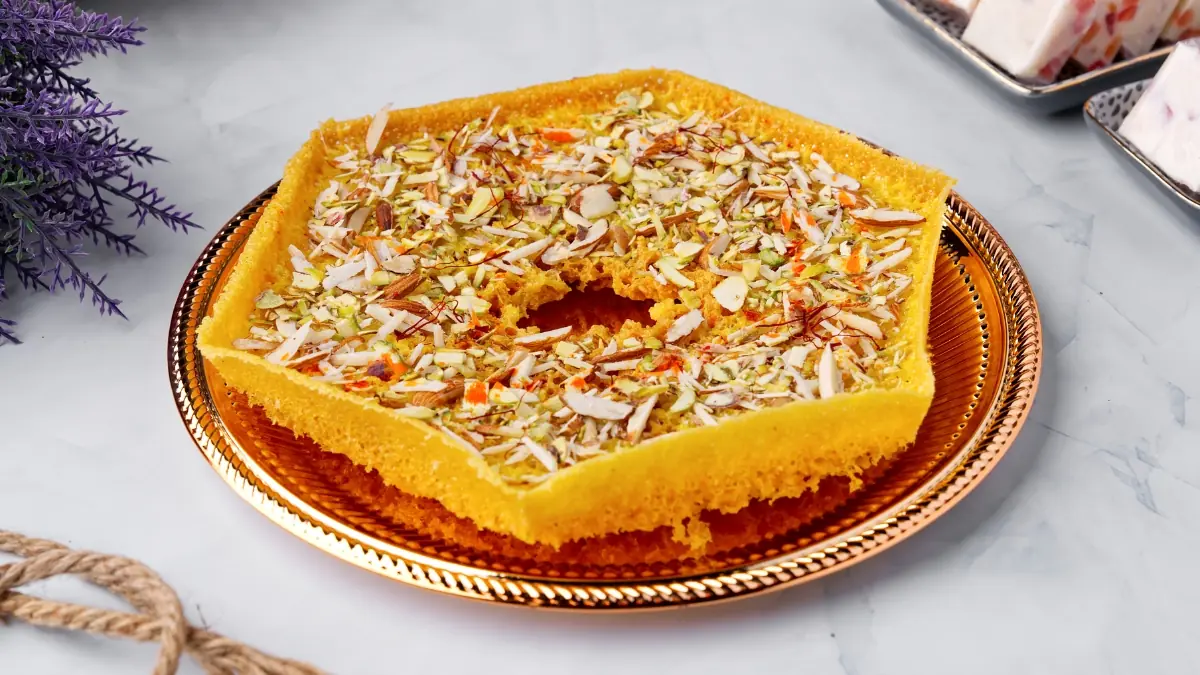Ghevar is synonymous with Sawan. Whenever you step into any Indian sweet shop during the monsoon season, or to shop for mithai for festivals like Teej or Raksha Bandhan, you’ll find yourself standing in front of a tower of stacked ghevar. The utterly mouth-melting Rajasthani sweet has to be the undisputed king of the rainy season. And since it’s available for just a month or two, the monsoons make you crave ghevar every time it rains.
With its iconic honeycomb structure, crispy texture, and often topped with rabri and loads of nuts, there’s no mithai quite like ghevar. But who said you’ll have to wait for another year to get a taste of your favourite sweet? You can nail the web-like structure at home, too. Undoubtedly, it is a laborious process and requires precision, but once you set your heart to it, you can nail ghevar, just like your favourite mithai shop. All you need to do is follow this step-by-step guide, stay clear of the common mistakes, and you’ll be good to go.
Ghevar is synonymous with Sawan. Whenever you step into any Indian sweet shop during the monsoon season, or to shop for mithai for festivals like Teej or Raksha Bandhan, you’ll find yourself standing in front of a tower of stacked ghevar. The utterly mouth-melting Rajasthani sweet has to be the undisputed king of the rainy season. And since it’s available for just a month or two, the monsoons make you crave ghevar every time it rains.
With its iconic honeycomb structure, crispy texture, and often topped with rabri and loads of nuts, there’s no mithai quite like ghevar. But who said you’ll have to wait for another year to get a taste of your favourite sweet? You can nail the web-like structure at home, too. Undoubtedly, it is a laborious process and requires precision, but once you set your heart to it, you can nail ghevar, just like your favourite mithai shop. All you need to do is follow this step-by-step guide, stay clear of the common mistakes, and you’ll be good to go.
Tips and Tricks
1 The ghevar batter should be ice-cold, and the oil should be extremely hot. The temperature difference between the two is what creates the jaali-like structure of ghevar.
2 Use a deep pan with straight walls. Avoid using a kadhai or a shallow pan.
3 Before pouring the batter into the oil, ensure it is smoking hot. If not, the ghevar batter will sink and make a lump.
4 The consistency of the batter should be thinner than dosa. If the batter is too thick, you’ll not get net-like holes; if it is too thin, the ghevar won’t hold its shape.
5 Always pour the batter from at least 6-7 inches away from the oil to get the perfect honeycomb-like texture.








